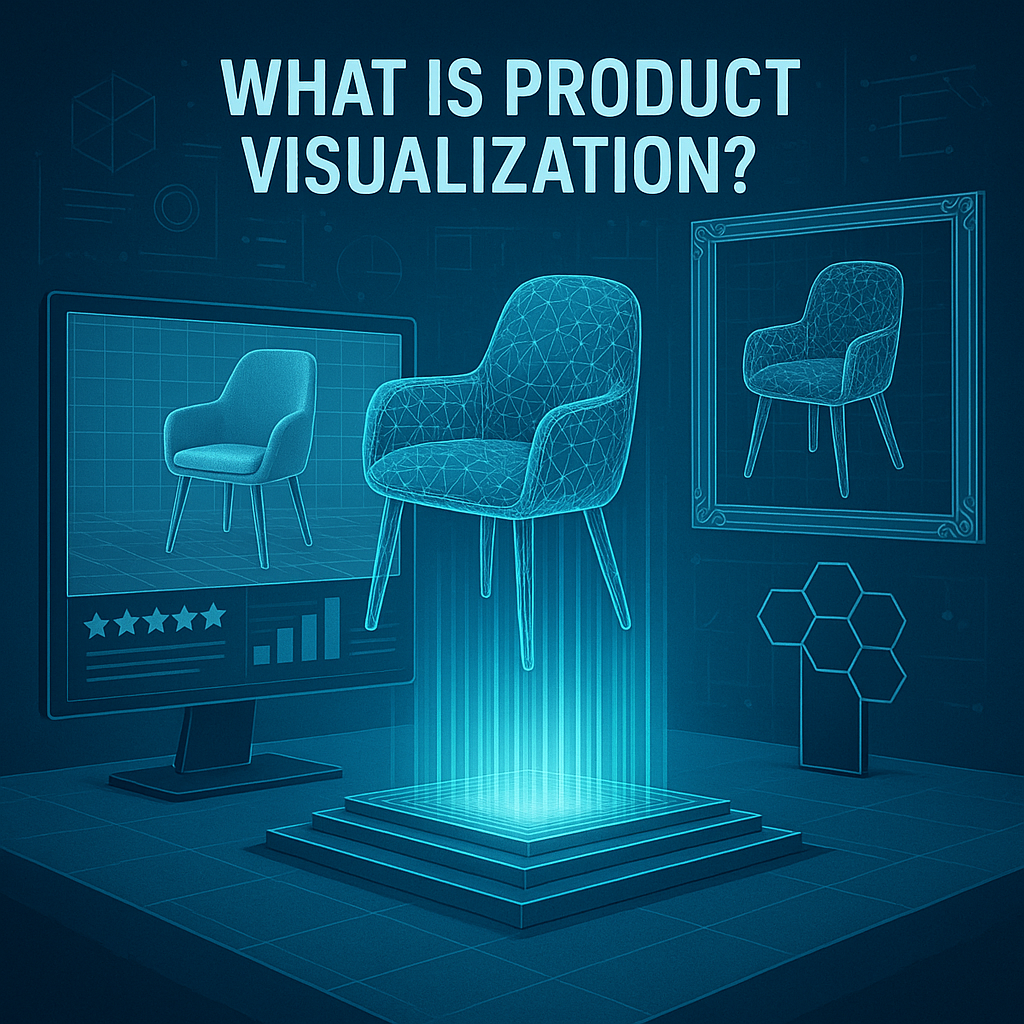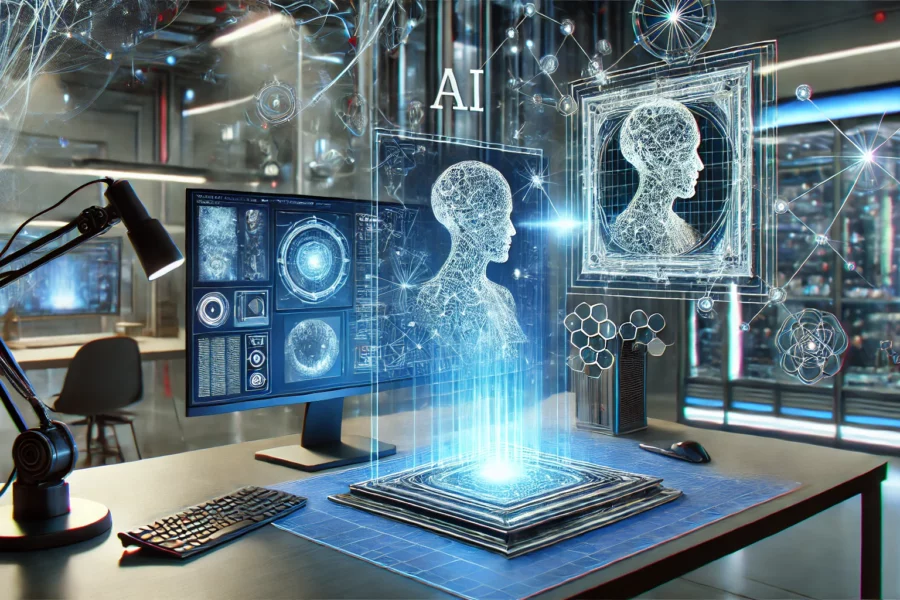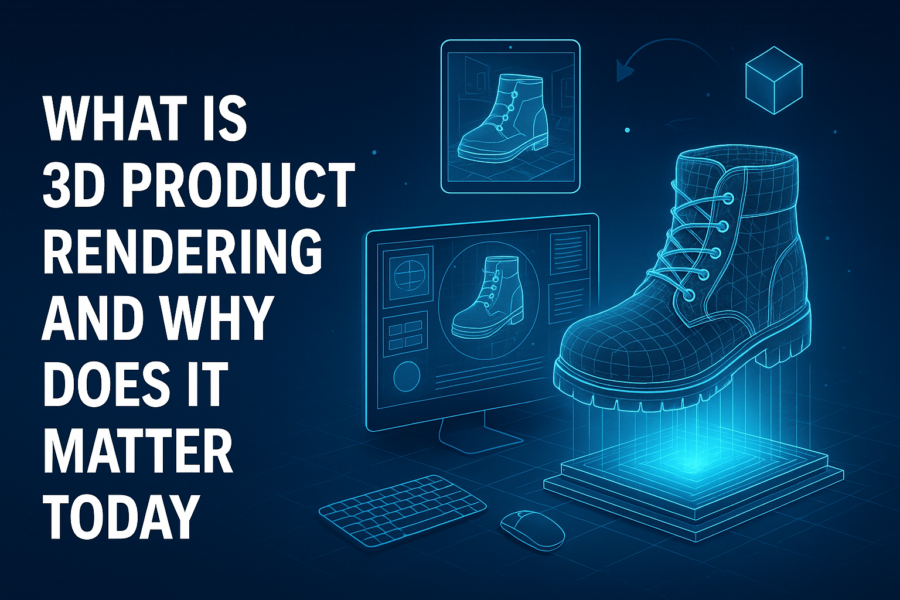Crafting memorable images is no longer a nice-to-have for e-commerce — it’s a key success driver. Product visualization has transformed the way consumers engage with products online from static images to immersive 3D models and AR-enabled experiences. It’s a new wave that’s not about adding visual flair — it’s about building trust, enhancing engagement, and facilitating smarter purchases. Brands that are using interactive shopping experiences are achieving spectacular results, from increased conversion rates to reduced product returns — a double win for loyalty and the bottom line. Whether it’s turning a sophisticated 3D representation, moving a virtual sofa into your living room with, or creating custom solutions with a clever product configurator, consumers want rich, intuitive experiences at each touch point. Here, we explore the history of online shopping, outline how product visualization is transforming the customer experience, and highlight real-world examples that prove that this technology is becoming the new gold standard for e-commerce success.
Test MAZING 2D to 3D AI Tool for Free
The Evolution of Shopping: From 2D Images to 3D and AR
Shopping has come a long way over the last two decades. It was long ago in the early 2000s when online stores only depended on static 2D images to display their products.Customers had to squint at miniscule thumbnails, questionably knowing size, texture, or how a product would really appear in three dimensions. It was a two-dimensional experience, based on more on trust than on actual visualization.
Fast forward to the present times, the game has totally transformed. Due to 3D product visualization and shopping technologies, consumers are able to spin, zoom, and even drop virtual products into their physical world using their smartphones. No longer guessing whether that sofa would go into the living room or whether those sunglasses suit one’s face shape. Consumers are able to touch a product basically as if they were holding it, from the ease and convenience of their own homes.
This did not occur overnight. Initial attempts at shopping online were cumbersome and slow. At the same time, breakthroughs in web technology, AI, and virtual reality enabled quick loading of hyper-realistic models on even mobile devices. Interactive shopping has been adopted by brands such as Amazon and IKEA, propelling the industry raise the standard even higher.
Today, product configurators enable consumers to tailor color, material, and features to in real-time, building an emotional connection well ahead of the checkout point. As 3D and AR technology becomes increasingly affordable, those not leveraging this trend risk being left behind in a marketplace where customer expectations are higher than ever before.
How Product Visualization Maximizes Customer Experience
One of the significant changes that commerce is undergoing currently is the call for richer, truer customer interaction. This is where product visualization takes center stage, turning a simple online transaction into an immersive experience. Rather than browsing through lifeless images, consumers now engage with 3D product simulations, bringing products to life before actually making purchase choice.
Personalization is where the power is at. With product configurators, customers are no longer passive viewers instead become active participants. Whether it be altering a sofa fabric or turning a piece of jewelry so it reflects light, even on that basic level, that form of engagement creates a tighter emotional resonance with the product. Shoppers do not have to fantasize any longer; they are able to see it, modify it, and own it virtually before they click „buy.“
Furthermore, AR shopping has eliminated the physical-virtual divide. Trying a lamp in your living room or placing a new coffee table beside your favorite chair takes seconds. It’s this hands-on preview that boosts confidence and excitement, drastically reducing hesitation during the buying journey.
Brands that are investing in experiential shopping experiences are noticing tremendous jumps in satisfaction levels. People feel appreciated when brands go that extra step and invest in technology that makes their shopping experience seamless and enjoyable. It is no longer about selling a product, but about creating an experience that is tangible and satisfying as stepping into a brick and mortar shop — without ever leaving the couch.
Effect of Product Visualization on Conversion Rates
In terms of driving sales on the web, there is nothing quite so effective as product visualization. Conventional flat images tend to make the customer wary, triggering large bounce rates and abandoned carts. But when consumers interact with 3D visualization of products, something what is exceptional becomes possible: their self-assurance soars — so do conversions.
Multiple studies, including data from major platforms like Amazon, show that AR shopping features can double conversion rates. When customers can zoom in, rotate, and explore products in 3D, they are surer about their options. That certainty is carried over to faster purchasing decisions and fewer second thoughts.
In addition to that, companies that use interactive shopping experiences tend to observe a dramatic decrease in the time it takes a guest to put an item into the cart. Engagement metrics climb since customers spend more time engaging with highly customizable and rich product models. The emotional connection that stems from this interaction significantly shortens the buyer’s journey.
In addition, incorporating product configurators within the online shopping process has known to drive higher average order values. When consumers are easily able to personalize products, they are likely to upgrade or add accessories they may otherwise not overlooked. It’s not only a matter of closing the sale but rather maximizing its potential.
Ultimately, consumers expect more nowadays. Product visualization doesn’t just meet those expectations — it exceeds them, turning casual browsers into loyal customers faster than ever before.
Decreasing Product Returns with Proper Visualization
One of e-commerce’s not so obvious challenges is dealing with high return rates on products. Customers usually return items because the product did not live up to their expectations. This mismatch occurs primarily when consumers are using limited visual cues.That is just where accurate product visualization makes a big difference.
By using 3D product visualization and AR shopping, stores provide consumers with pre-purchase nearly-tactile feel of the product. Consumers are able to see texture, size,and details from all perspectives, minimizing the risk of unpleasant surprises when the
the higher the product quality is likely to be and the higher the price
misunderstandings — and fewer returns.
Another innovation is the implementation of shopping experiences that are interactive where customers can engage with a virtual product within real-life scenarios. You could put a virtual couch into
your living room or trying on glasses on phone — all these activities greatly enhance confidence levels, and satisfaction with the transaction.
Brands with product configurators also benefit from them. By
customers to tailor features such as color or size to guarantee that the product they purchase is precisely the product they desired. This feeling of ownership and precision severely reduces return
rates, which not only save brands money on logistics but also maintain customer loyalty.
Precise visualization is no longer a nice-to-have; it is a necessary strategy for forward-thinking e-commerce companies that want to succeed within a highly competitive online marketplace.
Augmented Reality and 3D Models: The New Standard for E-commerce
In the rapid e-commerce age, Augmented Reality (AR) and 3D models have evolved from experimental novelties to obligatory essentials. Consumers no longer Content with simple product galleries — they crave immersive, realistic previews. That’s
Why forward-thinking brands are quickly embracing 3D product visualizations and AR shopping as being industry standard.
Envision shopping for a new coffee table online and immediately seeing where it would look in your living room through your mobile phone. That is the strength of AR shopping — it eliminates the distance between physical and virtual, offering customers complete control over their shopping experience. Rather than guessing, they view it, live it, and adore it.
In the meantime, 3D-driven shopping experiences are transforming the way products are being promoted and offered for sale. The products‘ detailed texture, realistic lighting, and viewability products from each point of view render static product images dated by comparison.Retailers who provide that extent of transparency establish trust, loyalty, and a better brand.
Central to all this is product configurators, which enable shoppers to tailor products in a natural and playful way. Whether modifying the colour of a jacket or selecting the completion of a new kitchen machine, configurators make each product seem tailor-made.The message is unequivocal: Brands which adopt product visualization using AR and 3D aren’t just keeping up — they’re on the forefront of online shopping’s future.
Selecting the Right Product Visualization Software
Identifying the correct product visualization software may seem daunting, but it is one of most important choices a brand has to make nowadays. Not every tool is made equal — and your 3D product visualization, shopping with AR, and shopping with interaction experiences largely depends on the platform that is selected.
First is scalability. You want software that is able to handle easily
manage hundreds or even thousands of SKUs without compromising on quality. Mazing is distinguishable in that it provides AI-driven 3D generation from a small number of 2D photos — rendering growth affordable and rapid.
Second, seamless integration is important. Search for sites that provide add-ons for widely used e-commerce sites, simple copy-pastable embeds, and integration with marketplaces such as
Amazon and OTTO. This guarantees that your product configurators and AR experiences don’t live on your website, but across your online presence as a whole.
Another aspect is analytics. Advanced visualization tools don’t only present your products; it also monitors how customers use them. It provides insights into view times,rotation angles, and AR placements are goldmines for honing marketing strategies.
Finally, security and GDPR compliance are a given if you go international. Protecting customers‘ data while presenting them with innovative experiences should go selecting the correct software isn’t just about breathtaking visuals — it’s about future-proofing your brand and delivering the shopping experience to customers that they expect for 2025 and beyond.
Test MAZING 2D to 3D AI Tool for Free
Case Studies: Success Stories with Product Visualization
Results from the world outside are far more convincing than any marketing campaign, and with product visualization, the figures are indeed staggering. 3D product visualization is embraced by many brands visualization, AR shopping, and shopping experiences that are interactive are creating new customer records of engagement, conversions, and loyalty towards a brand
Consider the case of Art-Mind Shop, which brought 3D and AR technology into their online store, they recorded a stunning 42% boost to their conversion rates and made over €6,000 additional revenue per best-seller. Even the CEO stopped A/B testing early since the new attraction was performing so much better than anticipated.
Similarly, Modus Furniture transformed their B2B operations by adopting product configurators and AR displays.Also, reduced exhibition costs by presenting thousands of products online. Remarkably, 50% of customers who viewed 3D models placed items into their cart within only two minutes.
As a whole, Amazon’s statistics indicate that consumers who engage with the tools of AR are twice as probable to make a purchase, and 94% of consumers indicate that they would use Virtual Try-On features again. That’s not just user preference — that’s a profound behavioral shift shaping the future of e-commerce
From enhancing conversions to lowering returns and building brand stature, success stories from across various industries show that product visualization is not necessarily a nice feature add-on — it’s a game-changer for serious online retailers.
Test MAZING 2D to 3D AI Tool for Free




